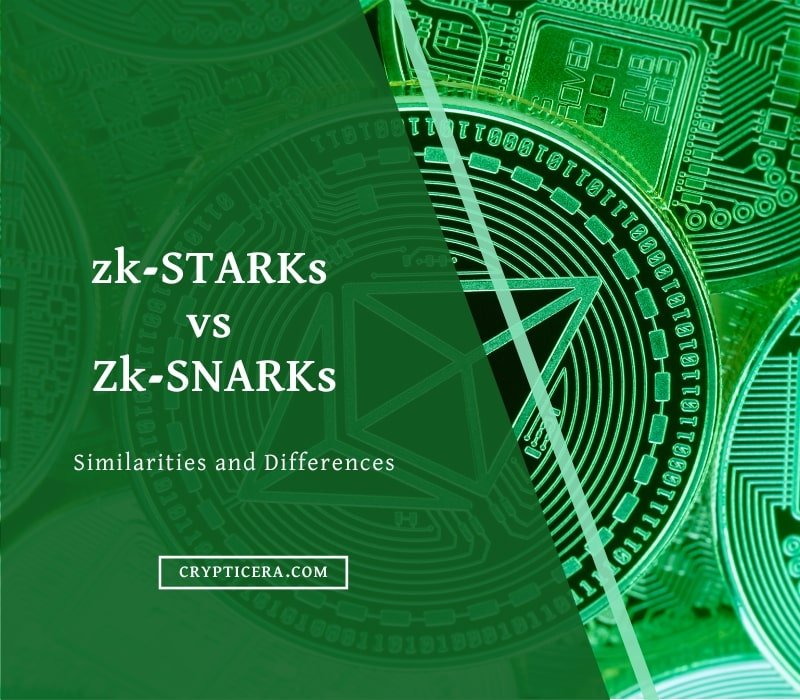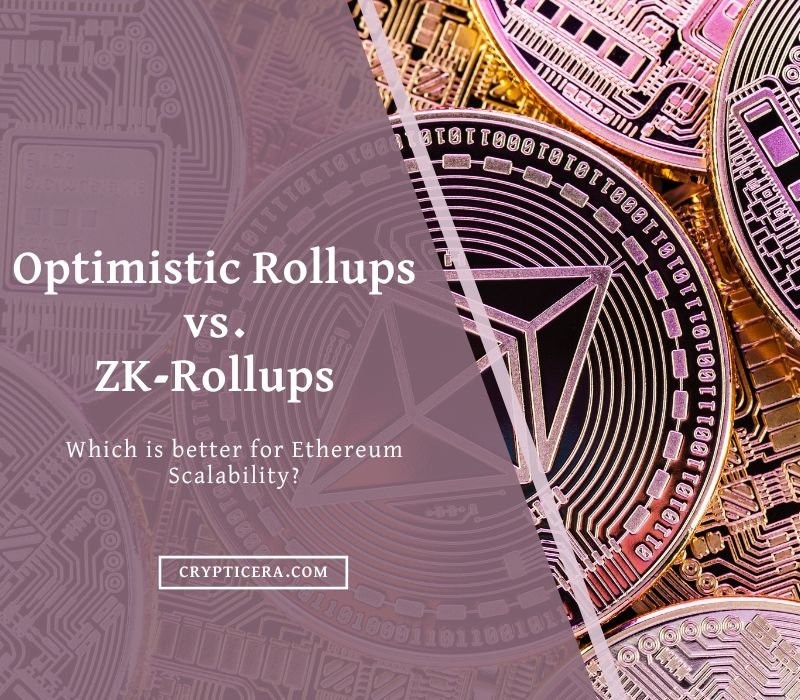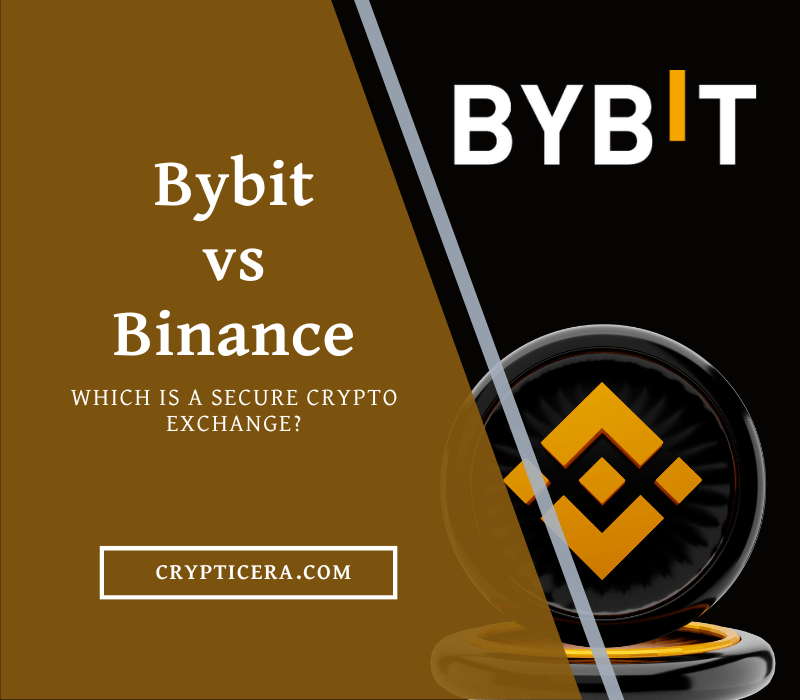In the world of digital assets and payment networks, there are many different options to choose from. Among the most well-known and widely used are Cardano, Stellar, and Ripple.
These three networks are all designed to facilitate fast and low-cost transactions, and they have many similarities, but they also have some key differences.
In this blog post, we will take a closer look at Cardano, Stellar, and Ripple, and compare them based on their features, capabilities, and potential uses.
We will examine each network in turn, highlighting its strengths and weaknesses, and ultimately, providing a comprehensive comparison of these three leading platforms.
Cardano (ADA) vs Stellar (XLM) vs Ripple (XRP): At a Glance
| Feature | Cardano | Stellar (XLM) | Ripple (XRP) |
|---|---|---|---|
| Decentralization | Decentralized | Decentralized | Centralized |
| Consensus mechanism | Proof of Stake (PoS) | Federated Byzantine Agreement (FBA) | Ripple Protocol Consensus Algorithm (RPCA) |
| Speed and scalability | Moderate | Fast and scalable | Fast and scalable |
| Transaction cost | Low | Low | Low |
| Currency support | Multi-currency support | Multi-currency support | Multi-currency support |
| Use cases | Transactions, asset exchange | Cross-border payments, remittances, asset exchange | Cross-border payments, remittances, asset exchange |
| Smart contracts | Supported | Not Supported | Not supported |
| Privacy | Limited privacy | Limited privacy | Limited privacy |
| Adoption | Moderate adoption | Moderate adoption | Moderate adoption |
| Programming language | Haskell | Stellar Core | Ripple Protocol |
| Governance | Voting by token holders | Consortium of trusted entities | Controlled by Ripple Labs |
| Partnerships and collaborations | Ethiopia land registry, EMURGO, IOHK | IBM, Deloitte, Satispay | Major banks and financial institutions |
| Community and ecosystem | Large and active, focus on research and development | Strong and diverse, focus on ecosystem building | Business-oriented, focus on partnerships and collaborations |
| Market performance | ADA market cap: $40+ billion | XLM market cap: $10+ billion | XRP market cap: $10+ billion, significant volatility and regulatory challenges |
What is Ripple (XRP)?

Ripple (XRP) is a cryptocurrency that is used for transactions on the Ripple network, which is a payment network that allows people to transfer money to anyone, anywhere in the world quickly and inexpensively.
Ripple is known for its fast transaction times and low transaction fees, making it a popular choice for financial institutions and individuals looking to send or receive money internationally.
Unlike other cryptocurrencies, Ripple is not created through mining but is instead issued by the company Ripple Labs. It can be bought and sold on cryptocurrency exchanges and is often used as a means of exchange for other cryptocurrencies.
Key Features of Ripple (XRP)
Ripple (XRP) is a cryptocurrency that was designed to be a fast and efficient way to send money around the world. It uses a unique technology called the Ripple Protocol, which is a decentralized network of servers that validate transactions and maintain a public ledger of all activity on the network.
Some key features of Ripple include:
- Fast transaction speeds: Ripple can process transactions in just a few seconds, making it much faster than many other cryptocurrencies.
- Low transaction fees: Because of the way the Ripple Protocol is designed, transactions on the network are relatively inexpensive compared to other cryptocurrencies.
- Decentralized: Ripple is a decentralized network, which means that it is not controlled by any single entity. This makes it resistant to censorship and allows it to operate independently of any government or other central authority.
- Scalability: The Ripple Protocol is designed to be able to handle a large number of transactions without slowing down or becoming congested.
- Interoperability: Ripple is designed to work seamlessly with other cryptocurrencies and traditional financial systems, making it easy to integrate into existing payment networks.
Drawbacks of Ripple (XRP) Network
- Centralization concerns: Although Ripple is a decentralized network, some people have raised concerns about the level of centralization within the network. For example, a significant portion of the total supply of XRP is owned by Ripple Labs, the company that developed the cryptocurrency.
- Lack of widespread adoption: Despite its potential benefits, Ripple has not yet been widely adopted by merchants or consumers. This means that it may not be as widely accepted as some other cryptocurrencies.
- Regulatory uncertainty: The legal status of cryptocurrencies like Ripple is still unclear in many countries, which could pose a risk for people who hold or use XRP.
- Limited use cases: Ripple has primarily been designed and marketed as a way to send money quickly and cheaply between different currencies and financial institutions. This means that it may not have as many potential use cases as some other cryptocurrencies, which can be used for a wider range of purposes.
- Competition from other cryptocurrencies: Ripple is not the only cryptocurrency that offers fast and cheap transactions. There are many other cryptocurrencies that compete with Ripple in this space, including Bitcoin, Litecoin, and Ethereum, which could make it difficult for Ripple to gain a significant market share.
- Controversies: Ripple has been involved in a number of controversies over the years, including allegations of insider trading and disputes with other members of the cryptocurrency community. These controversies could damage the reputation of Ripple and make it less attractive to potential users.
- Lack of privacy: Unlike some other cryptocurrencies, Ripple does not offer strong privacy protections for users. This means that transactions on the Ripple network are not as private as they would be on some other cryptocurrencies.
What is Stellar (XLM)?

Stellar is an open-source, decentralized protocol for digital currency to fiat money transfers which allows cross-border transactions between any pair of currencies.
The Stellar network facilitates low-cost, cross-asset transfers of value, including payments. The native digital asset of the Stellar network is called Lumens (XLM).
Key Features of Stellar (XLM)
- Decentralized: The Stellar network is based on a distributed ledger, which means that it is decentralized and not controlled by any single entity. This provides users with greater control over their assets and allows for faster, more secure transactions.
- Fast and scalable: The Stellar network can process thousands of transactions per second, making it one of the fastest and most scalable blockchain networks in existence.
- Low-cost: The Stellar network uses a unique consensus mechanism that allows for low-cost transactions, even for very small amounts of money.
- Multi-currency support: The Stellar network supports a wide range of digital and fiat currencies, allowing users to easily transfer value between different assets.
- Anchors: Stellar relies on “anchors” to issue and redeem digital assets on the network. These anchors can be trusted institutions, such as banks or payment processors, that act as intermediaries between the Stellar network and the real-world financial system.
- Smart contracts: The Stellar network supports the use of smart contracts, which are self-executing contracts with the terms of the agreement between buyer and seller being directly written into lines of code. This allows for the automation of complex transactions and the creation of new, innovative financial applications.
Drawbacks of Stellar (XLM)
- Limited adoption: Despite its many attractive features, Stellar has not yet achieved widespread adoption, particularly when compared to other blockchain networks such as Bitcoin and Ethereum. This limited adoption can make it more difficult for users to find counterparties for transactions and may limit the potential use cases for the network.
- Dependence on anchors: Stellar relies on anchors to issue and redeem digital assets on the network. This means that the network is only as strong as its weakest anchor, and the failure or inability of an anchor to fulfill its role could have negative consequences for the network as a whole.
- Lack of privacy: The Stellar network does not offer the same level of privacy as some other blockchain networks. All transactions on the network are publicly visible, which may not be desirable for users who value their privacy.
- Competition: Stellar faces significant competition from other blockchain networks and payment systems, both within the cryptocurrency space and from traditional financial institutions. This competition may make it difficult for Stellar to gain a significant market share and achieve widespread adoption.
- Governance challenges: As a decentralized network, Stellar is not controlled by any single entity. This can make it difficult to make important decisions or coordinate changes to the network, which could limit its ability to evolve and adapt to new developments in the broader blockchain ecosystem.
Ripple (XRP) vs Stellar (XLM): Key Differences
Both Stellar (XLM) and Ripple (XRP) offer fast, low-cost, and multi-currency payment processing capabilities, making them suitable for a wide range of use cases.
However, the main difference between the two is that Stellar is decentralized, while Ripple is centralized. This means that Stellar is not controlled by any single entity, whereas Ripple is controlled by the company Ripple Labs.
This can affect how the two networks are governed and may influence their long-term viability and adoption.
| Feature | Stellar (XLM) | Ripple (XRP) |
|---|---|---|
| Decentralization | Decentralized | Centralized |
| Consensus mechanism | Federated Byzantine Agreement (FBA) | Ripple Protocol Consensus Algorithm (RPCA) |
| Speed and scalability | Fast and scalable | Fast and scalable |
| Transaction cost | Low | Low |
| Currency support | Multi-currency support | Multi-currency support |
| Use cases | Cross-border payments, remittances, asset exchange | Cross-border payments, remittances, asset exchange |
| Smart contracts | Supported | Not supported |
| Privacy | Limited privacy | Limited privacy |
| Adoption | Moderate adoption | Moderate adoption |
What is cardano (ADA)?

Cardano (ADA) is a decentralized platform that uses blockchain technology to enable secure and transparent transactions.
It is a smart contract platform that is built on a proof-of-stake consensus algorithm, which means that it uses a different method to reach consensus on the network compared to other cryptocurrencies like Bitcoin, which uses a proof-of-work algorithm.
Cardano aims to be a more advanced and scalable platform than other blockchain networks, with a focus on providing secure and efficient ways to transfer value and execute smart contracts.
Key Features of Cardano (ADA)
Built on a proof-of-stake consensus algorithm
Cardano uses a proof-of-stake algorithm called Ouroboros to reach a consensus on the network.
This means that instead of miners competing to solve complex mathematical puzzles to validate transactions, as is the case with proof-of-work algorithms, the network uses a system of “validators” who stake their ADA tokens to participate in the consensus process and earn rewards.
This approach is more energy-efficient than proof-of-work and is intended to enable faster and more scalable transaction processing.
Scalability
One of the main goals of Cardano is to be a highly scalable platform that can handle a large number of transactions per second. To achieve this, the platform uses a modular design that allows for the implementation of new features and upgrades without disrupting the overall network.
This design also allows for the use of different languages and technologies, which can make it easier for developers to build applications on the Cardano network.
Security
Cardano uses a multi-layered architecture to provide a high level of security for the network and its users.
The network is divided into two layers: the Cardano Settlement Layer (CSL), which handles the transfer of value, and the Cardano Computation Layer (CCL), which enables the execution of smart contracts and other complex computations.
This separation of concerns allows for greater flexibility and security, as it allows the network to evolve and upgrade without compromising the security of the underlying ledger.
Interoperability
Cardano is designed to be interoperable with other blockchain networks, which means that it can easily exchange information and value with other networks. This allows for the creation of complex, multi-chain applications and the development of new use cases for blockchain technology.
Governance
Cardano is built on a decentralized platform, which means that it is governed by its users through a system of voting and delegation.
This allows for a high degree of community involvement in the decision-making process and ensures that the platform remains aligned with the needs and interests of its users.
Drawbacks of Cardano (ADA)
- Complexity: The design of Cardano is highly complex, which can make it difficult for some users to understand and use. This complexity can also make it more challenging for developers to build applications on the Cardano network, which could limit its adoption and use.
- Limited use cases: While Cardano is designed to be a highly versatile and scalable platform, it is still in the early stages of development and has not yet been widely adopted. This means that there are currently relatively few use cases for the platform, which could limit its potential value.
- Competition: Cardano is not the only blockchain platform that uses a proof-of-stake consensus algorithm, and it faces competition from other networks that are working on similar technology. This competition could make it difficult for Cardano to gain a significant market share and could limit its potential growth.
Cardano (ADA) vs Ripple (XRP)
| Feature/Drawback | Cardano (ADA) | Ripple (XRP) |
|---|---|---|
| Consensus algorithm | Proof-of-stake | Hybrid (uses both proof-of-work and proof-of-stake) |
| Scalability | High (modular design and proof-of-stake algorithm) | High (uses a distributed ledger technology) |
| Security | High (multi-layered architecture) | High (uses cryptographic techniques) |
| Interoperability | Yes | Yes |
| Governance | Decentralized (user-governed through voting and delegation) | Centralized (controlled by the Ripple company) |
| Complexity | High | Moderate |
| Adoption | Moderate (newer platform) | High (established network) |
| Use cases | Limited (early stages of development) | Multiple (used by banks and financial institutions) |
| Competition | Moderate (other proof-of-stake platforms) | High (other blockchain and payment networks) |
| Regulation | Uncertain (unregulated industry) | Uncertain (unregulated industry) |
Comparing Cardano, Ripple, and Stellar based on
Scalability
Cardano (ADA), Ripple (XRP), and Stellar (XLM) are all blockchain networks that aim to provide scalable solutions for the transfer of value and the execution of smart contracts. However, they differ in their approach to scalability, as described below:
- Cardano uses a proof-of-stake consensus algorithm called Ouroboros, which is intended to be more energy-efficient and scalable than proof-of-work algorithms. The platform also uses a modular design that allows for the implementation of new features and upgrades without disrupting the overall network.
- Ripple uses a distributed ledger technology called the Ripple Protocol Consensus Algorithm (RPCA), which is designed to enable fast and secure transaction processing. The network is managed by a network of independent “validating nodes” that use a consensus process to validate transactions and maintain the integrity of the ledger.
- Stellar uses a consensus protocol called the Stellar Consensus Protocol (SCP), which is a federated Byzantine agreement (FBA) algorithm that allows for fast and efficient transaction processing. The network is managed by a network of “validator nodes” that use the SCP to reach a consensus on the state of the ledger.
Transaction Fees
The transaction fees on Cardano (ADA), Ripple (XRP), and Stellar (XLM) are all relatively low compared to other blockchain networks, such as Bitcoin and Ethereum.
However, the exact fees for each network can vary depending on a number of factors, including the volume and type of transactions being processed.
In general, all three networks aim to provide low-cost and efficient solutions for the transfer of value and the execution of smart contracts.
DApps
Cardano (ADA) is a blockchain platform that supports smart contracts. Like Ethereum, Cardano is a decentralized, open-source platform that allows developers to build and deploy decentralized applications (dApps) and smart contracts.
Ripple does not support smart contracts in the same way that Cardano does. However, Ripple does offer some features that are similar to smart contracts, such as multi-signature escrow and payment channels, which can be used to create trustless and efficient transactions between two parties.
Stellar (XLM) is not a smart contract platform. It is a decentralized, open-source protocol for facilitating fast and low-cost transactions between two parties. Stellar is designed to enable the transfer of value, including money, assets, and other forms of digital value, between individuals and organizations.
Cross border Payments
Cross-border payments refer to the transfer of money or other assets from one country to another. The fees associated with these payments can vary depending on a number of factors, including the payment network or financial institution being used, the amount being transferred, and the destination country.
Cardano, Ripple, and Stellar are all digital asset and payment networks that are designed to facilitate fast and low-cost cross-border transactions. Cardano uses a proof-of-stake (PoS) consensus algorithm to validate transactions on its network, while Ripple and Stellar use different consensus mechanisms.
In general, the fees associated with cross-border payments on these networks are likely to be lower than those charged by traditional financial institutions, but the exact fees will depend on the specific details of the transaction.
Conclusion
In conclusion, it is clear that Cardano, Stellar, and Ripple are all powerful and versatile digital asset and payment networks that have a lot to offer. Each network has its own unique features and capabilities, and they all approach the problem of facilitating fast and low-cost transactions in different ways.
While Cardano uses a proof-of-stake (PoS) consensus algorithm, Stellar and Ripple use different consensus mechanisms.
Additionally, Cardano is focused on providing a platform for building and deploying decentralized applications (dApps), while Stellar and Ripple are more geared toward facilitating transactions between individuals and organizations.
Ultimately, the choice between these three networks will depend on the specific needs and requirements of the user.
FAQs
Are Cardano, Stellar, and Ripple decentralized?
Yes, all three networks are decentralized, meaning that they are not controlled by any single entity or organization. Instead, they use a distributed network of computers and servers to validate and process transactions. This decentralized structure allows these networks to operate without the need for intermediaries, which can reduce the cost and complexity of transactions.
Are Cardano, Stellar, and Ripple secure?
Yes, all three networks employ various security measures to protect against potential attacks and ensure the integrity of the network. For example, they may use cryptographic techniques to encrypt transactions and prevent unauthorized access. However, like any other digital asset or payment network, they are not completely immune to security risks, and users should always take appropriate precautions to protect their assets and information.
Can you trade Cardano, Stellar, and Ripple on exchanges?
Yes, all three networks can be traded on various cryptocurrency exchanges. This allows users to buy and sell these assets using fiat currencies or other cryptocurrencies, providing additional flexibility and liquidity. However, it is worth noting that the availability and trading pairs of these networks may vary depending on the exchange, and users should always conduct their own research and due diligence before trading on any platform.


